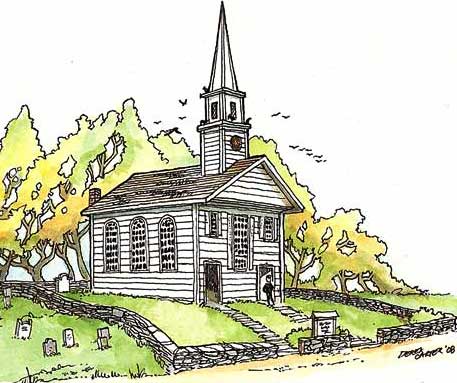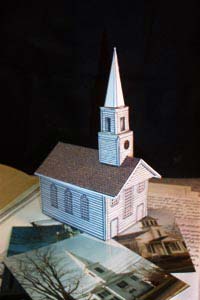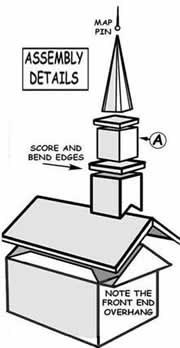


New England Meeting House and Church

The Meetinghouse and its skyward pointing steeple, usually painted a brilliant white, was the universally recognized symbol of the New England town in the early 19th century. After the Revolution, there was a great increase in religious diversity in New England, with a number of denominations forming religious societies and building houses of worship. Whether founded in the 18th century or in the early 19th, rural New England’s religious societies usually occupied prominent locations on the town common. There they built or remodeled and redecorated their houses for worship, often in rural interpretations of the Grecian style.
The years after 1790 were a time of religious revival and growing church attendance. Churchgoers often attended lengthy Sunday morning and afternoon services, and mid-week evening gatherings as well. Congregationalists and Baptists—both descended from the original churches of the Puritans—were the two largest denominations in New England; but there was ample evidence of the great upsurge in religious diversity since the Revolution. The Unitarians, Methodists, Universalists, Episcopalians, and Friends also had their own houses of worship.
Meetinghouses were still symbols of town authority as well as of spiritual power. Some towns were building structures set aside for local government, but most continued to hold town meetings and elections in centrally located meetinghouses—a reminder of earlier days when churches and state had been closely joined. In the newer public life of the early 19th century, meetinghouses were also the place for Independence Day and Washington’s birthday celebrations, concerts, and lyceum lectures.
but most continued to hold town meetings and elections in centrally located meetinghouses—a reminder of earlier days when churches and state had been closely joined. In the newer public life of the early 19th century, meetinghouses were also the place for Independence Day and Washington’s birthday celebrations, concerts, and lyceum lectures.
Based on the 'Meeting House' that lives on at Old Sturbridge, Mass, this model will probably be the proud center piece of your Fiddlersgreen New England Village Layout. The building that now serves as the Village’s Center Meetinghouse was acquired by Ruth Wells, the museum’s first director, in 1947. It belonged to the Sturbridge Baptist Society, which was joining with another denomination and agreed to exchange the structure for an organ in their new church. Soon afterwards the Meetinghouse was taken apart, moved, and reassembled as a museum exhibit.
Unlike present day Churches, most early American Churches doubled as Meeting Houses.They were central to the village,and usually the largest building in the New England Village. You might consider building a little raised area for your model New England Meeting House and be sure to place it facing east..
 Easy to build and accurate Meeting House model |
 The 'Original'Meeting House lives at Old Sturbridge Village, MA |
|
 The Old Sturbridge Meeting House with artificial tree |
 Assembly drawing for the New England Meeting House model |
|
 The Old Sturbridge New England Meeting House in a natural setting |
||


